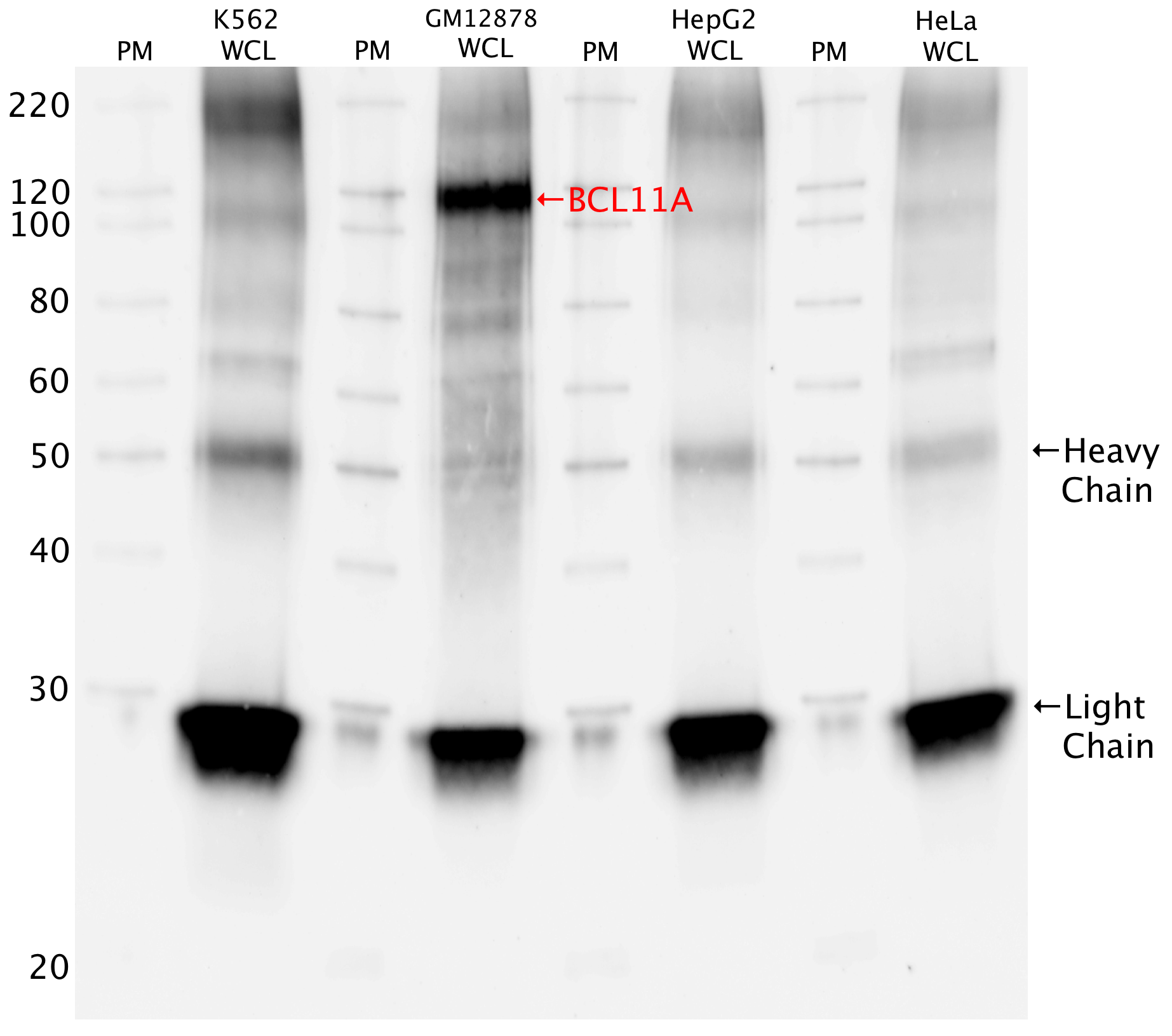ENCAB000AEF
Antibody against Homo sapiens BCL11A
Homo sapiens
at least one cell type or tissue
awaiting characterization
- Status
- released
- Source (vendor)
- Santa Cruz Biotech
- Product ID
- sc-56011
- Lot ID
- B2811
- Characterized targets
- BCL11A (Homo sapiens)
- Host
- mouse
- Clonality
- monoclonal
- Isotype
- IgG
- Antigen description
- Raised against BCL11A of human origin.
- External resources
Characterizations
BCL11A (Homo sapiens)
not reviewed
- Caption
- Western blot protocol: Whole cell lysate was immunoprecipitated using primary antibody, and the IP fraction was loaded on a 12% acrylamide gel and separated with a Bio-Rad PROTEAN II xi system. After separation, the samples were transferred to a nitrocellulose membrane with an Invitrogen iBlot system. Blotting with primary (same as that used for IP) and secondary HRP-conjugated antibodies was performed on an Invitrogen BenchPro 4100 system. Visualization was achieved using SuperSignal West Femto solution (Thermo Scientific). Results: A strong band of ~120 kDa is visualized, representing strongest signal in the lane. The 120 kDa band is tested by mass spec in Validation 2. Figure legend: IP-western with sc-56011 in whole cell lysate (WCL) of K562, GM12878, HepG2 and HeLa; PM=protein marker. BCL11A band is indicated.
- Submitted by
- Richard Myers
- Lab
- Richard Myers, HAIB
- Grant
- U54HG004576
BCL11A (Homo sapiens)
Method: immunoprecipitation followed by mass spectrometry
not reviewed
- Caption
- IP followed by mass spectrometry: Briefly, GM12878 whole cell lysates were immunoprecipitated using primary antibody, and the IP fraction was loaded on a 12% acrylamide gel and separated with a Bio-Rad PROTEAN II xi system. The gel was stained with Coomassie Blue in order to visualize marker bands. Gel fragments corresponding to the bands indicated above in the western blot image were excised and sent to the University of Alabama at Birmingham Cancer Center Mass Spectrometry/Proteomics Shared Facility. There the samples were run on an LTQ XL Linear Ion Trap Mass Spectrometer by LC-ESI-MS/MS. Peptides were identified using SEQUEST tandem mass spectra analysis, with probability based matching at p < 0.05. As per ENCODE data standards, all SEQUEST results are attached (ENCODE_HAIB_BCL11A_sc56011_12072011_MassSpec.pdf), including common contaminants. Target protein is listed as hit 19a with 0.9999% probability in the ~120 kDa band.
- Submitted by
- Richard Myers
- Lab
- Richard Myers, HAIB
- Grant
- U54HG004576
